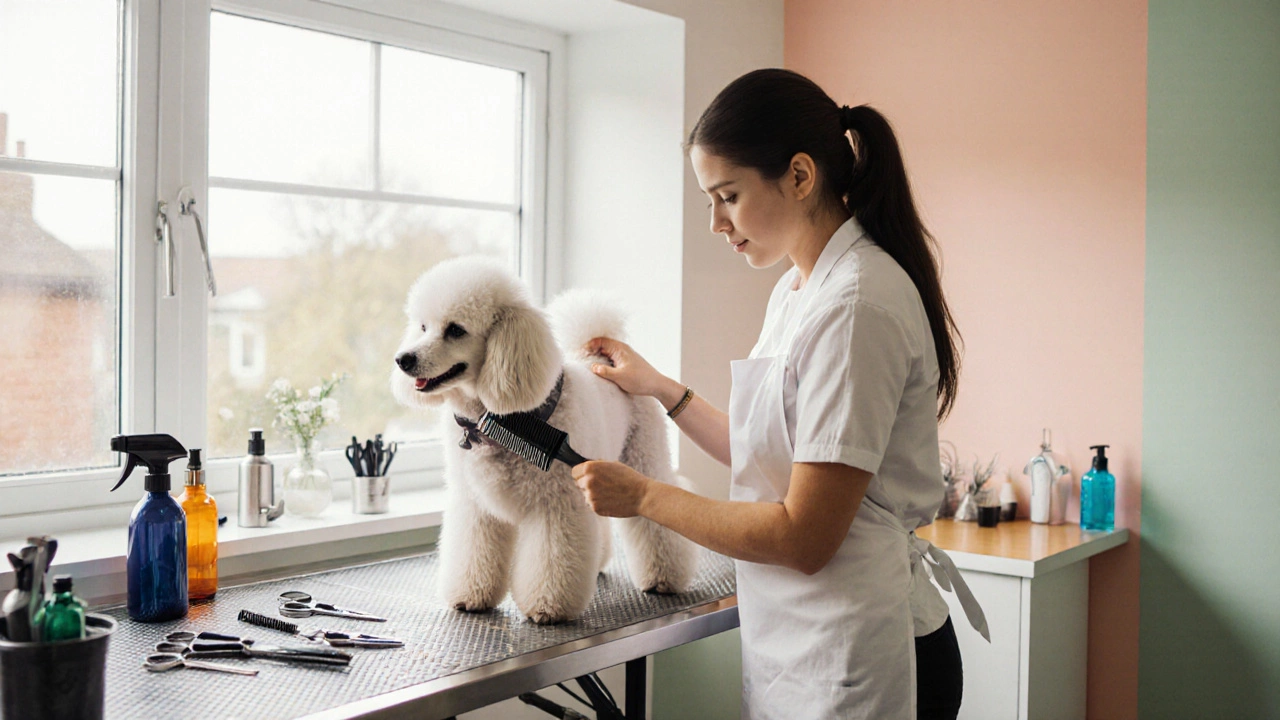Dog Grooming Salary – What to Expect in the UK
When talking about dog grooming salary, the typical earnings a groomer makes for washing, trimming, and styling dogs. Also called pet groomer pay, it varies widely based on experience, location, and qualifications. Understanding these variables helps anyone eyeing the profession set realistic goals.
Key Factors That Shape Earnings
The dog groomer, a professional who provides grooming services for canines often sees salary shifts tied to three main drivers: shop type, client base, and skill level. Independent salons in affluent areas tend to charge higher fees, so groomers there see a boost in base pay + commissions. Mobile groomers, on the other hand, earn per appointment and can scale income by covering multiple towns in a day. Finally, seasoned groomers who specialize in show‑ring cuts command premium rates because owners are willing to pay for expertise.
The broader pet grooming industry, the market that includes grooming, boarding, and related pet services also influences salary trends. When demand spikes – for example during summer holidays when owners seek to keep coats tidy – salons often hire extra hands, offering overtime or temporary boosts. Conversely, off‑season periods may see reduced hours, which directly impacts weekly earnings.
Certification plays a pivotal role. Groomers holding a Level 2 or Level 3 qualification from recognized bodies such as the National Association of Pet Groomers typically see a 10‑15% salary uplift compared to non‑certified peers. These courses teach advanced clipping patterns, skin health assessment, and client communication, making certified groomers more marketable to high‑end salons.
Location matters, too. In London and the South East, the average annual dog grooming salary hovers around £28,000‑£32,000, while in northern regions like Yorkshire or the Midlands, figures drop to £20,000‑£24,000. The cost‑of‑living adjustment explains the gap, but it also means a groomer willing to relocate can negotiate higher rates.
Employment type adds another layer. Full‑time staff often receive a fixed salary plus benefits such as pension contributions and paid leave. Freelance groomers set their own rates, which can exceed £35,000 annually if they build a loyal client base and schedule efficiently. However, freelancers must cover their own insurance, equipment, and transport costs, so net profit may align more closely with salaried counterparts.
Beyond base numbers, many groomers boost income through add‑on services: teeth cleaning, de‑shedding treatments, and specialty spa packages. These extras usually carry a 20‑30% markup, and savvy groomers integrate them into routine appointments, turning a standard cut into a higher‑value session.
All these pieces – shop type, certification, location, and extra services – create a web of influences on the dog grooming salary. By mapping them, aspiring groomers can choose the path that aligns with their financial goals.
Below you’ll find a curated set of articles that break down each of these factors, from salary surveys and regional pay guides to certification benefits and tips for maximizing earnings as a mobile groomer. Dive in to see how the numbers play out in real‑world scenarios.
- Morgan Ainsworth
- 0 Comments
Can You Make a Living as a Dog Groomer? Salary, Costs & Path to Success
Discover if a dog grooming career can pay the bills, learn typical earnings, costs, and steps to turn grooming passion into a profitable business.
View More
